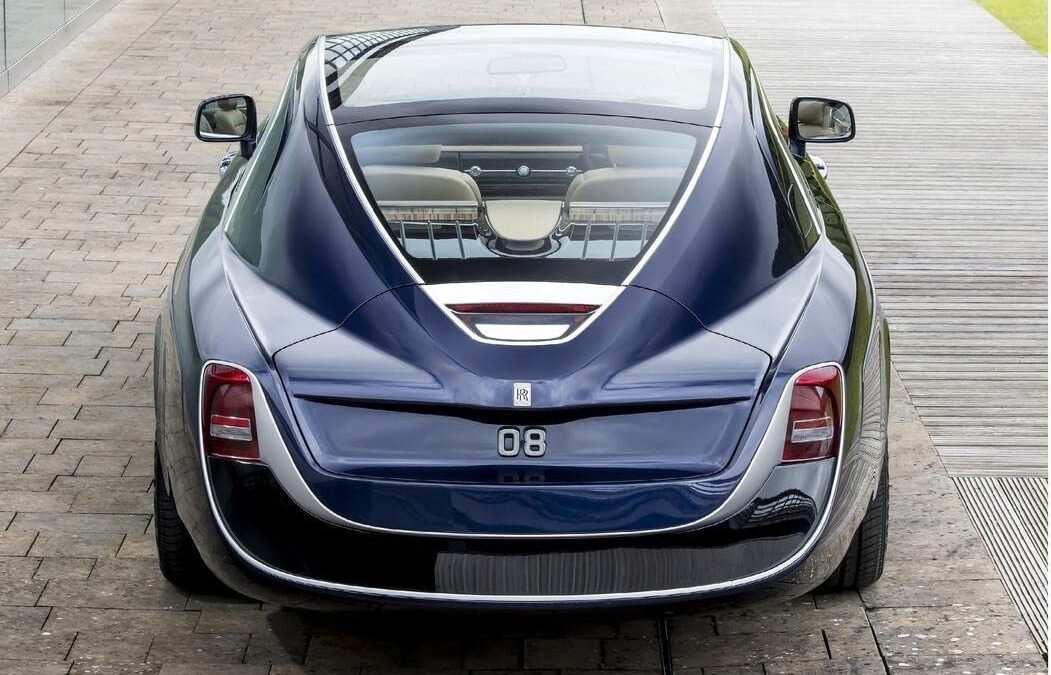
Rolls-Royce and Bentley Coachbuilt Specials in the Modern Era shines a light on every modern (1966 to 2017) modified and coachbuilt Rolls-Royce and Bentley. The goal is to create a record of their existence for future enthusiasts. The book is hardbound and contains 612 color pictures spread across 296 pages. Many of the pictures have never been published anywhere, including some astounding pictures of the cars made only for the Brunei royal family. In addition, there are fantastic and highly detailed pictures of the amazing Niko-Michael Camargue retractable hardtop convertible, and numerous Hooper cars based on the Silver Spirit and Turbo R. No other book has so many amazing pictures of the modern coachbuilt Rolls-Royce motorcars and Bentleys by Jankel, Frua, Hooper, Zagato, Touring, Panelcraft and others. It is a must-read for all Rolls-Royce and Bentley enthusiasts.

The full-color Porsche 911 Carrera (Type 996) Service Manual: 1999-2005 is a comprehensive source of service information and specifications for Porsche 911 (Type 996) Coupe, Targa and Convertible models from 1999 to 2005. The aim throughout this manual has been simplicity and clarity, with practical explanations, step-by-step procedures and useful specifications. Whether you re a professional or a do-it-yourself Porsche owner, this manual will help you understand, care for and repair your Porsche.
Although the do-it-yourself Porsche owner will find this manual indispensable as a source of detailed maintenance and repair information, the Porsche owner who has no intention of working on his or her car will find that reading and owning this manual makes it possible to discuss repairs more intelligently with a professional technician.
Models covered:
- 1999-2005 911 Carrera, Carrera 4, Carrera 4S
Important Technical Coverage Note: 2005 Carrera (RWD) models were built on the Type 997 platform. Type 997 cars are not covered by this manual. To verify that your car is covered by this repair manual, check the 12th digit of the VIN:
- 6 = Type 996
- 7 = Type 997
Engines covered:
- 1999-2001: 3.4 liter (M96.01, M96.02, M96.04)
- 2002-2005: 3.6 liter (M96.03)
Transmissions covered:
- G96 (6-speed manual)
- A96 (5-speed automatic)
Technical highlights:
- Full-color repair manual pages (black and white electrical section).
- Maintenance procedures for everything from flushing front and rear differential fluids to replacing the interior ventilation microfilter. This manual tells you what to do and when to do it.
- Step-by-step engine and cylinder head removal and installation.
- Cooling system filling and bleeding, coolant pump replacement and engine cooling fan and radiator service.
- Fuel injection and ignition system service, including explanation of different Bosch DME engine management systems.
- Clutch, flywheel and rear main seal service.
- Front and rear drive train service, including front (C4) and rear differential service.
- Brakes, steering, suspension and ABS maintenance, troubleshooting and repair.
- Heating and air-conditioning repair, including A/C component replacement.
- Body adjustments and repairs.
- Convertible top service, including convertible top hydraulic motor and microswitch replacement and a diagnsotic fault code table.
- Electrical system service, with an easy-to-use illustrated component locator section.
- Wiring schematics for selected models, with power distribution, grounds, convertible top and other hard to find circuits.
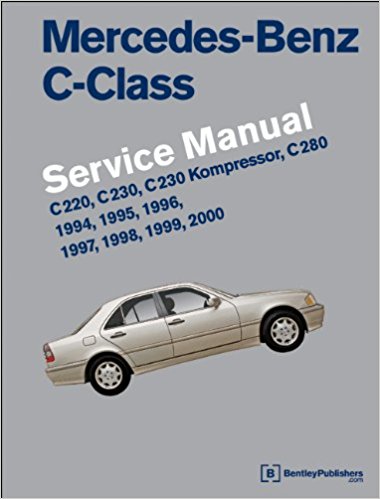
The Mercedes-Benz C-Class (W202) Service Manual: 1994-2000 contains in-depth maintenance, service and repair information for the Mercedes-Benz C-Class from 1994 to 2000. The aim throughout has been simplicity and clarity, with practical explanations, step-by-step procedures and accurate specifications. Whether you’re a professional or a do-it-yourself Mercedes-Benz owner, this manual helps you understand, care for and repair your car.
The do-it-yourself Mercedes-Benz owner will find this repair manual indispensable as a source of detailed maintenance and repair information. Even if you have no intention of working on your vehicle, you will find that reading and owning this manual makes it possible to discuss repairs more intelligently with a professional technician.
Models and engines covered:
- C 220, 4-cylinder 2.2 liter (M 111)
- C230, 4-cylinder 2.3 liter (M 111)
- C230 Kompressor, 4-cylinder 2.3 liter (M 111)
- C 280, 6-cylinder 2.8 liter (M 104)
- C 280, V6 2.8 liter (M 112)
Transmissions covered:
- 4-speed automatic (1994-1996)
- 5-speed automatic (1997-2000)
Technical highlights:
- Covers Mercedes-Benz C-Class models 1994 2000 based on the W202 platform, sold from 1994 through 2000.
- Maintenance procedures from changing the ATF to replacing the cabin air filter. This manual tells you what to do and how and when to do it.
- Step-by-step cylinder head cover and cylinder head removal and installation.
- Cooling system and radiator service.
- Fuel injection and ignition system diagrams and explanations.
- Information about advanced technical features such as variable intake manifold, traction control and stability control.
- Suspension repair procedures.
- Brakes, steering and ABS troubleshooting and repair.
- Heating and air conditioning repair, including A/C component replacement.
- Body, hood and sunroof repairs and adjustments.
- Electrical system service, with an easy-to-use illustrated component locator section.
- Comprehensive wiring schematics, including power distribution and grounds.
- Mercedes-Benz OBD II diagnostic trouble codes, SAE-defined OBD II P-codes, as well as basic scan tool operation.
- Mercedes-Benz factory tolerances, wear limits, adjustments, and tightening torques.
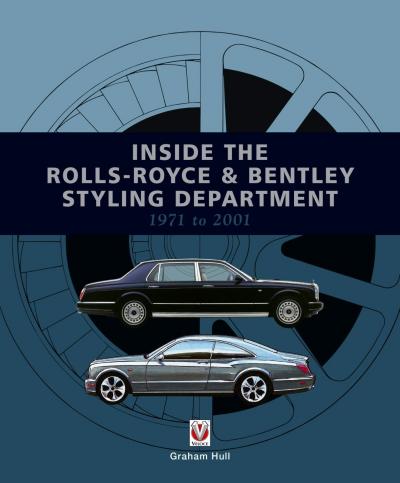
From a small design team working on the Silver Spirit/Mulsanne, to becoming Chief Stylist, Graham Hull peels back the curtain on an idiosyncratic institution during his time at Crewe. Throwing light on a factory motivated as much by pride as the bottom-line, all of the projects – whether production, special commission, or aborted designs – are covered, and the often unique styling process is explored. This process was a key element in the resurgence of the dormant Bentley marque, that, with its fortunes on the rise, became the star of the Geneva Motor Show, attracting commissions from wealthy enthusiasts for totally bespoke vehicles. Founding fathers Royce and Rolls melded engineering with marketing, but as marketing took over, this union fractured. The drama of how this British institution was divided between BMW and VW, and how aesthetic design, never cherished by British management, was increasingly recognised, is fundamental to the story. The bewildering number of projects during the 1990s is a genuine eye-opener and a phenomena that demanded unique people, skills, and facilities.
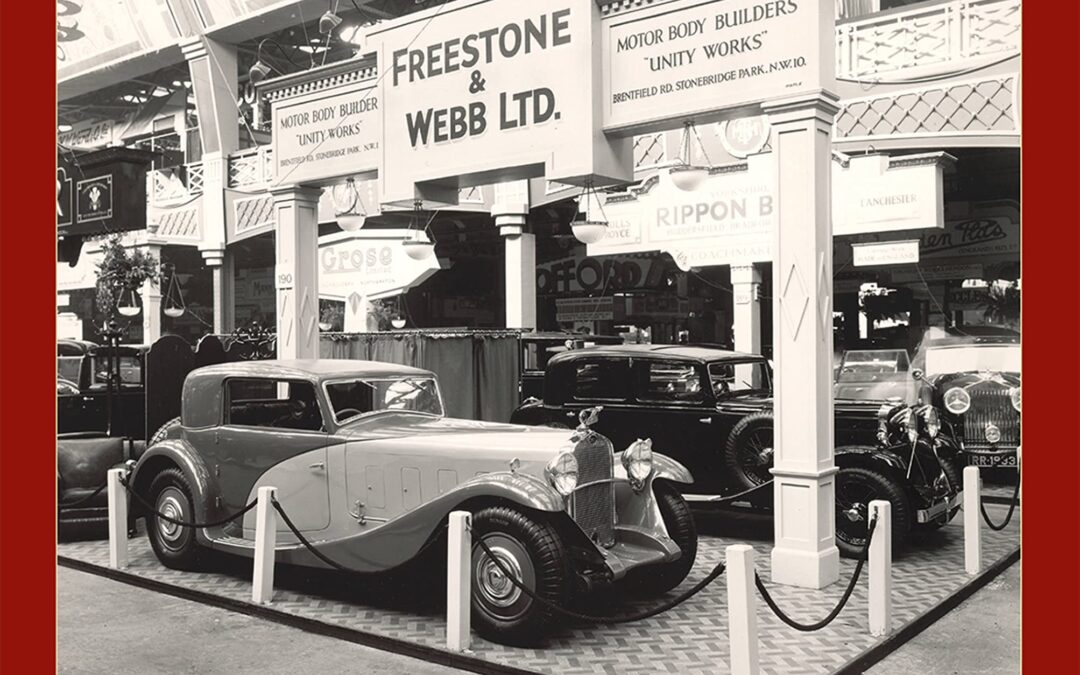
Freestone & Webb was a great name in British coachbuilding for some 35 years, but as demand for coachbuilt car bodies dried up in the 1950s, the company became the first of the Big Five remaining specialists to close down.
They had started in the early 1920s, as the motoring scene was settling down after the upheaval of the First World War. Early devotees of lightweight Weymann construction, they soon earned the approval of the nearby Bentley company because their bodies did not unduly hinder the performance of these great sporting chassis. Before long, Rolls-Royce models were also being provided with stylish and well-made Freestone & Webb coachwork, and so were many leading foreign chassis, such as Mercedes-Benz and Packard.
Although the partnership of Messrs Freestone and Webb was dissolved before the 1930s had got under way, the company survived the bleak years at the start of the decade and continued to build both arrestingly beautiful bespoke bodies and distinctive coachwork in small-volume batches. Most notable in this period was their razor-edge style, which was rapidly copied by many other coachbuilders and would remain influential into the early 1950s.
Like others, the company struggled to get back into the game after an enforced layoff during the Second World War. But with the aid of good designs and fine workmanship, they survived into the 1950s with their reputation intact. Sadly, their continued survival could only be a matter of time, and Arthur Webb was already looking to sell the company when he died in 1954. Freestone & Webb continued gamely for four more years, experimenting with new designs and going out in a blaze of glory with their extravagant Honeymoon Express for a Rolls-Royce Silver Cloud.
This is the story of a great British coachbuilder, told with the aid of meticulous research and with great affection for the grandeur and style that its products still represent.
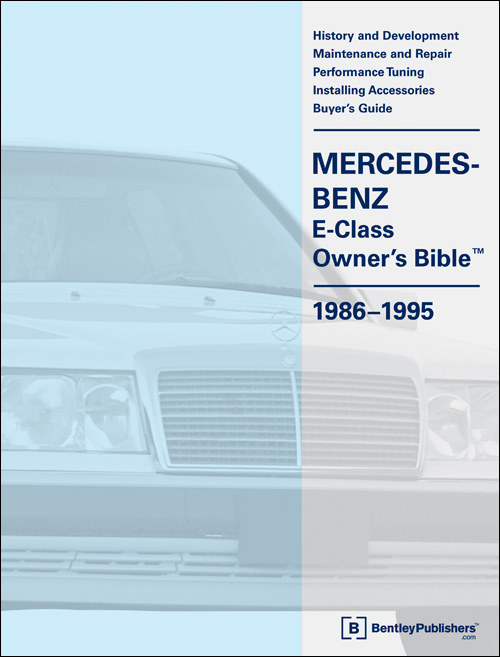
- History and Development
- Maintenance and Repair
- Performance Tuning
- Installing Accessories
- Buyer’s Guide
| The E-Class Owner�s Bible” is an E-class buyer�s guide, maintenance handbook and technical reference source wrapped into one. It is full of tech tips, service hints and system descriptions, plus lots of insightful information about the W124 E-Class chassis.
This book can help steer you through the purchase of your first Mercedes-Benz, provide the information necessary to maintain your E-Class to factory standards, give you the assurance to speak knowledgeably to your service professional and provide you with the hot setup for better road handling.
Models included in this Mercedes-Benz repair manual:
Gasoline engine:
- 260E
- 300E, 300E 2.6, 300E 2.8, 300E 4MATIC
- 300CE, 300CE cabrio
- 300TE, 300TE 4MATIC
- 400E
- 500E
- E320 sedan, coupe, cabrio and wagon
- E420
- E500
Diesel engine:
- 300D Turbo, 300D 2.5 Turbo, 300TD Turbo, E300 Diesel
|
|
The prospective buyer will also find tips on what to watch out for, why a pre-purchase inspection is important and why one model may be preferred to another. Do-it-yourself owners will discover a huge hands-on maintenance chapter to help keep their E-Class at peak efficiency.
Technical highlights:
- Comprehensive maintenance procedures, including HVAC microfilter replacement, brake pad and rotor replacement and engine oil and fluid change procedures listing the necessary tools, tightening torques and fluid capacities.
- Year-by-year analysis of E-Class technical highlights, including the inspiring 500E sports sedan and when the multi-cam M104 engine replaced the M103 single cam workhorse.
- Buying tips on how to get the best car for the least amount of money, things to look for during the test-drive and how having a prepurchase inspection can potentially save you thousands of dollars.
- Seasoned advice on choosing the right repair shop, be it an authorized Mercedes-Benz dealer, an independent specialist or an all makes-all models shop.
- Detailed technical information on vehicle systems, including engines, suspension, drivetrain, body and interior features.
- Performance modifications, including a listing of parts needed to upgrade to the Sportline suspension.
- A brief historical overview of Mercedes-Benz, the world�s oldest car company.
To bring you this authoritative volume, Bentley Publishers has teamed up with Stu Ritter, a 25-year independent Mercedes-Benz repair shop owner/technician and current technical editor of The Star (the magazine of the Mercedes-Benz Club of America).
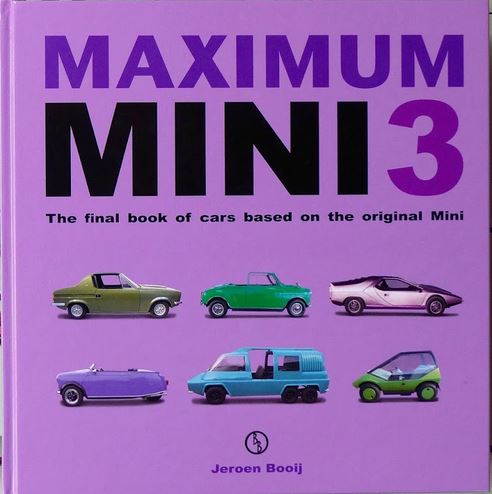
The final book in the Maximum Mini series, already now referred to as the Mini’s ‘Trilogy of Terrors’…
So, what to expect?
Another 128 pages full of Mini based cars, in a hardback similar in size and lay-out as the first two volumes. Yes. But that’s where the similarities end. This one is quite different from what you have seen before.
Where all of the known and slightly lesser known cars were covered in detail over a two-page spread each in the first two books, this one features a lot more of them. 397 More Mini derivatives to be precise. Yes. 397. It has become a bit of an encyclopedia of obscurities and you’ll be surprised to find out what else the Mini’s multipurpose mechanicals brought forth. Trikes, twinis, racers, coachbuilt specials, beach cars, buggies, jeeps and a dragster, oh yes. But there are also also Mini powered fire engines, crop sprayers, ice cream vans, camper vans, motorkhana specials, miniature buses and wacky marketing mobiles. There is a Wood & Pickett trimmed four-door Mini which did the grueling 16,000-mile World Cup Rally in 1970 and a three-wheeler that was designed and built by the chief stylist of Rolls-Royce and Bentley in his spare time. There are Mini Moke based movie vehicles from Moonraker and UFO, The Persuaders and The Prisoner.
Apart from the UK the vehicles featured in this book originate from Ireland, the US, Canada, Australia, New Zealand, Scotland, Germany, Malta, Japan, Italy, France, Greece, Portugal, South-Africa, Belgium, The Netherlands, Spain, Barbados, Denmark, Uruguay, Chile and Switzerland.
limited edition of 600 numbered pieces
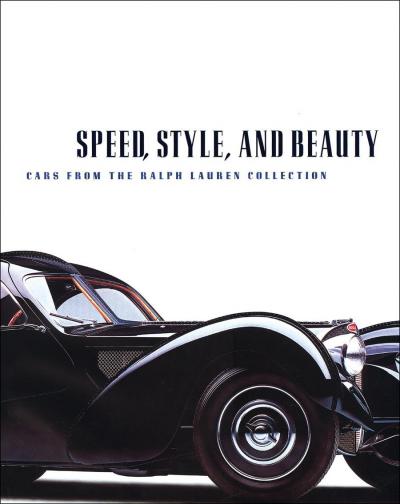
Bugatti and Bentley, Alfa and Aston, Mercedes and McLaren-these are not merely cars, they are some of the most exquisite automobiles ever assembled, selected by Ralph Lauren, one of the foremost designers of our time. This breathtaking volume features 29 of these wonders-from such unparalleled masterpieces as the 1930 Mercedes Benz “Count Trossi,” the 1938 Alfa Romeo Mille Miglia, and the 1938 Bugatti Atlantic Coupe to marvels from Jaguar, Aston Martin, Ferrari, Porsche and even a Ford “Woody”-each of these vehicles is lovingly photographed and presented with authoritative elegance. Complementing the images are sketches of these and other cars-rarely seen drawings that give insight into the conceptual and development stages of the automobiles. Now in its fourth printing, Speed, Style, and Beauty is the first book on cars to center its discussion squarely on the car’s role as an art object. The 29 chapters, by two of the best known and most respected authors writing about cars today, gives the indispensable background information, but also approaches the cars the way an art historian would approach fine sculpture-treating them as consummate works of decorative art for the modern age. With over 160 color images by world-renowned photographer Michael Furman, plus an introductory interview with Ralph Lauren who discusses the links between the cars and his overall design philosophy, this is an elegant yet informative book that will delight both the rampant car enthusiast and aficionados of great design in any form. The sleekly curved chrome and steel of these timeless dream machines conjures the glamour of the 1930s, the opulent ease of the 1950s and the charged excitement of the 1980s-the perfect marriage of speed, style and beauty.










